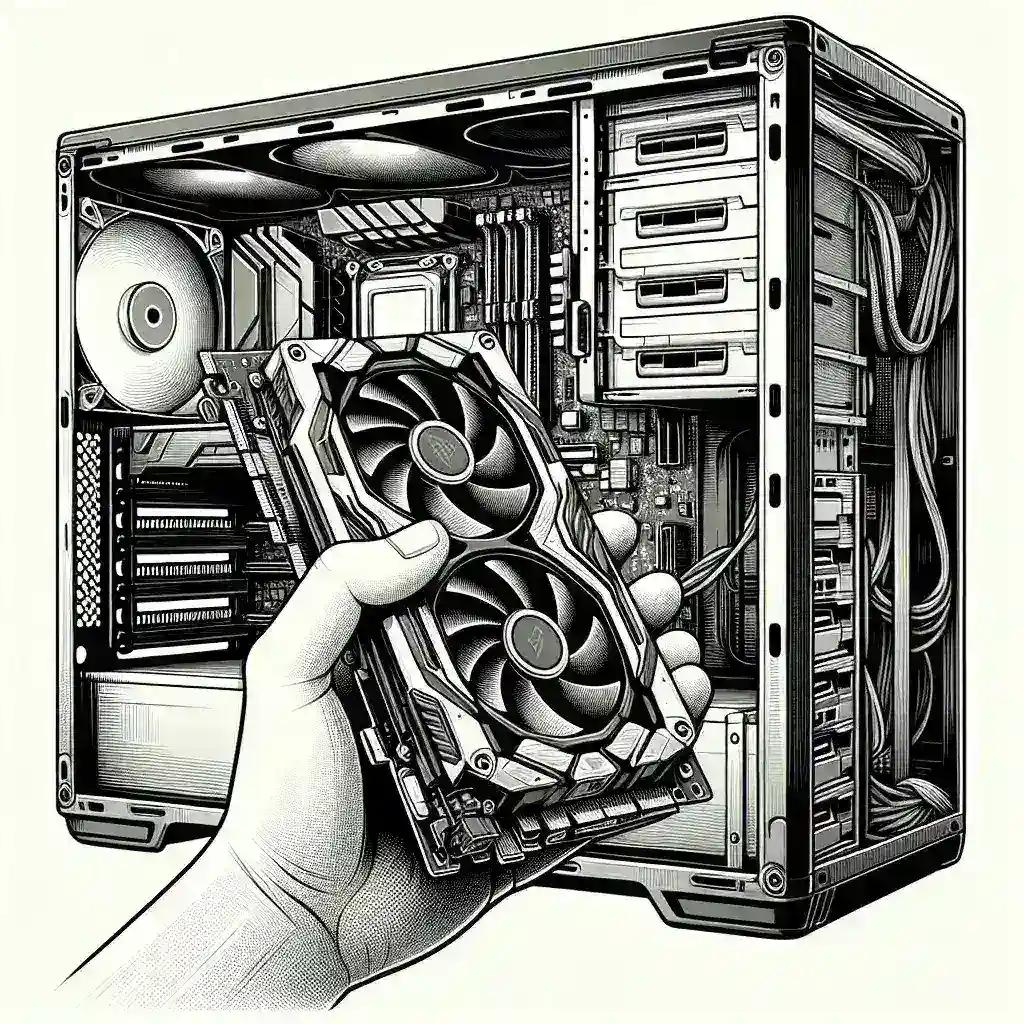Gaming PCs have evolved significantly over the years, with innovations aimed at improving performance, aesthetics, and user experience. One of the most impactful features in modern gaming PCs is the inclusion of modular, upgradeable GPUs (Graphics Processing Units). These design choices are no accident—they cater to the growing demands of the gaming community and tech enthusiasts. But why exactly are some gaming PCs designed with modular, upgradeable GPUs? This article delves into the various reasons and advantages behind this trend, offering insight into how it revolutionizes the gaming experience.
The Evolution of Gaming PCs
Before diving into the reasons for modular, upgradeable GPUs, it is essential to understand the evolution of gaming PCs. From bulky, specialized machines to sleek, customizable rigs, gaming PCs have come a long way. Initially, upgrades were limited to basic components like RAM and storage. However, as games grew more complex and graphically demanding, the need for powerful GPUs became more pronounced.
Components of a Gaming PC Over Time
| Era | Main Components |
|---|---|
| 1990s | Basic CPU, Low RAM, Fixed GPU |
| 2000s | Advanced CPU, Increased RAM, Replaceable Storage, Basic GPU Upgrades |
| 2010s | High-Performance CPU, High RAM, SSDs, Modular GPUs |
| 2020s | Multi-core CPUs, Ultra-High RAM, NVMe SSDs, Modular & Upgradeable GPUs |
Why Modular, Upgradeable GPUs?
Several factors contribute to the increasing adoption of modular, upgradeable GPUs in gaming PCs. Here are the primary reasons:
1. Enhanced Performance
The performance of a gaming PC heavily relies on its GPU, especially for graphically intensive games. Modular GPUs allow gamers to upgrade their systems with the latest technology, ensuring that they have the best possible performance. This flexibility is crucial as game graphics and requirements evolve.
2. Future-Proofing
Modular GPUs offer a form of future-proofing, extending the lifecycle of a gaming PC. Instead of replacing the entire system as technology advances, gamers can simply upgrade the GPU. This capability reduces long-term costs and ensures that the PC remains competitive with new releases.
3. Cost-Effectiveness
Upgrading only the GPU is often more cost-effective than purchasing a whole new system. By investing in a modular design, gamers can allocate their budget more efficiently, focusing on the components that need the most improvement without redundant spending.
4. Customization and Personalization
Gamers have unique preferences and requirements when it comes to their gaming setups. A modular design allows for greater customization, giving users the freedom to choose GPUs that match their specific needs, whether it’s for 4K gaming, VR, or competitive esports.
5. Ease of Maintenance
A modular design simplifies the process of maintaining and repairing a gaming PC. If a GPU fails or underperforms, it can be replaced easily without professional help. This ease of upgrade and maintenance appeals to tech-savvy gamers who prefer hands-on control over their systems.
The Role of Manufacturers
Manufacturers play a crucial role in the adoption of modular, upgradeable GPUs. Leading brands like NVIDIA, AMD, and Intel continuously develop GPUs with the latest technology. Their commitment to producing high-performance and easily upgradeable components drives the market forward.
Innovative Designs by Leading Brands
- NVIDIA: Known for their GeForce series, NVIDIA offers GPUs with features like real-time ray tracing and DLSS (Deep Learning Super Sampling), making them highly desirable and easily upgradeable.
- AMD: AMD’s Radeon series provides competitive performance with innovations like RDNA architecture, which allows for easy upgrades and compatibility with various systems.
- Intel: Recently entering the GPU market, Intel’s Xe graphics aim to offer modularity and high performance, providing another option for gamers looking for upgradeable solutions.
Community and Market Demand
The gaming community itself has a significant influence on the design choices of gaming PCs. Gamers are vocal about their needs, creating a demand for systems that offer upgradable options. This demand compels manufacturers to focus on modular designs, ensuring that they capture the attention and loyalty of gamers.
Looking Ahead: The Future of Modular GPUs
The future of gaming PCs is promising, with modular GPUs at the forefront of this evolution. As technology advances, we can expect even more sophisticated and accessible upgrade options. Innovations like AI-driven performance enhancements and cloud-based gaming will likely complement the modular GPU market, offering gamers unprecedented flexibility and performance.
Expected Innovations
- AI Integration: Future GPUs may integrate AI to optimize performance dynamically, providing a more seamless gaming experience.
- Cloud-Based Enhancements: Cloud computing could offer additional performance boosts, making modular GPUs even more potent in combination with online resources.
- Energy Efficiency: As environmental concerns grow, future modular GPUs will likely focus on delivering high performance with lower energy consumption.
Conclusion
The rise of modular, upgradeable GPUs in gaming PCs is a response to the ever-growing demands of the gaming community. From enhanced performance and future-proofing to cost-effectiveness and customization, these designs offer various benefits that cater to modern gamers’ needs. As technology continues to evolve, modular GPUs will undoubtedly play a crucial role in shaping the future of gaming PCs, providing gamers with the flexibility and performance necessary to enjoy immersive and cutting-edge gaming experiences.

